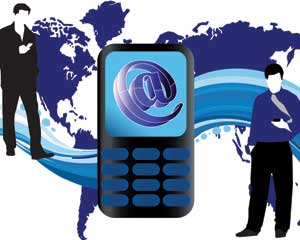- Category: November 2011
 For many marketers, mobile is the Holy Grail for location-based marketing. Today’s smartphones, tablets and connected devices are virtually all GPS enabled thus allowing for a myriad of location oriented marketing opportunities.
For many marketers, mobile is the Holy Grail for location-based marketing. Today’s smartphones, tablets and connected devices are virtually all GPS enabled thus allowing for a myriad of location oriented marketing opportunities.
MMA Perspective: Asia Pacific
The APAC region has the most experience with Location Based Services (LBS), led by Japan and Korea. Adoption has been widespread and growth forecasts, for both consumer usage and revenues derived from LBS are very impressive. Strategy Analytics (SA), a leading global organization with analysts based in Europe, Asia and the Americas, have shared their forecasts for the APAC region. Their 2011 report notes, “(we) expect the popularity of mobile search, maps, and navigation applications to drive the adoption of location based services among consumers. The growth will be underpinned by the rising installed base of GPS enabled smartphones and data plans.”
Types of Location Based Services:
Many Location Based Services today combine concepts from several of the types listed below, which are described in terms of functionality. Many of them could, in fact, be realized via a variety of mobile media including downloadable applications, mobile web sites, messaging, or Interactive Voice Response (IVR).
- Navigation: Provides driving, walking, or other directions; often “turn by turn”. Examples: Operator-branded navigation applications, Google Maps, Nokia's Ovi Map.
- Geo-fence Services:
a) Friend/family finder/tracker: Ability to locate other trusted users in real-time (i.e. friends or family, by consent), or see where they last “checked in”, be notified when they are nearby, receive periodic alerts or alerts based on position (i.e. geo-fence). Examples: Loopt™, MyFriendGPS™, AT&T FamilyMap™, RunKeeper, and Trail Tracker (activity Tracking), Asset tracking.
b) Enterprise Fleet Tracking and Timecarding: Allows businesses to use employee and/or asset location for business purposes (i.e. verify asset is at the intended location). Example: Telenav™. - Mapping, Travel and Point of Interest: View current location on a map relative to points of interest. Examples: WHERE™, Snocator™, MapQuest™, Public Transportation Routes.
- Geo-tagging: Uses location to provide additional context to a picture or message.
- Location Sharing: Connect with nearby users who have chosen to share their profile publicly. Search profiles of other users based on preferences (i.e. distance, age, gender, interest/keywords, etc.) Examples: Foursquare, Facebook Connect.
- Check-in Based Contest and Games: Reward the user (typically with discounts or coupons) for visiting retailer locations and “checking in”. LBS are used to verify that the user was at or near the retailer location when checking in. Examples: MyTown™, Gowalla™, Foursquare™, Rummble™.
- Local Search: The defining characteristic of effective mobile local search is the ability to match location with user-specified intent thus enabling the user to search and discover what is nearby. Examples: Poynt, WHERE™, Yelp™.
- Local/Hyperlocal Content: A contextual experience based on a specific locale. For mobile local search, the user's location and specified intent are the most significant components. Examples: Local weather conditions, local sports scores, in-store services.
Types of Location Based Marketing:
Marketers have many choices to location-enable a campaign based on campaign objectives. These include:
- Geo-targeted Text and Display Advertising: The paid placement of a promotion or sponsorship message within mobile media that is integrated with LBS. Two types of targeting are common:
a) User Targeting: Advertisers who wish to only reach users in a certain geographic area can use this type of targeting.
b) Message Targeting: Presenting a different message to users based on their location. - Embedded Icons (Sponsored embedded advertising): The sponsorship deals can be map embedded or on-the-page/in-app. Sponsored embedded advertising displays without a search term but is based on end-user's interests and/or brand affinity. Icons or logos are displayed in maps or augmented reality to help users determine relevant proximity/location.
- Search (aka: Local Directory Advertising): Advertising for listings of local merchant retailers. For example, Citysearch™, Dex, Yellow Pages all fit in this category. Generally these campaigns will include some form of user targeting to show listings only to users in a relevant geographic area.
- Location Triggered Notifications: Uses proximity information (Wi-Fi, Bluetooth, GPS or Network-based) to provide App Alerts or Messaging based on user preferences and opt-ins. These services can be automated (vs. requiring a check-in or app) and can run on both smart and feature phones. Once opted-in, alerts are delivered whenever a consumer is near a store, and can be tailored to a specific location (e.g. incorporating address or directions) and an offer specific to that nearby store.
- Location Branded Application: The usage of LBS technology to enhance brand-owned mobile media services. Media brands are the most ardent supporters of these apps.
- Check-in Based Contests and Games: Reward the user (typically with discounts or coupons) for visiting retailer locations and “checking in”. LBS are used to verify that the consumer was at or near the retailer location at the time the consumer is checking in.
- Click-to-X Routing: Routing either calls, data from broad campaigns to local call centers or localized information. For example a nationwide auto dealer might use LBS to route calls from a nationwide click-to-call campaign to the nearest local auto dealer based upon the consumer’s precise location.
Location Based Marketing and LBS continue to evolve as other types of mobile services gain adoption by consumers. As social becomes more integrated into mobile marketing efforts, we will see greater integration of social and LBS, especially as Facebook integrates their services with location. With this, advertising is expected to follow giving mobile marketers additional opportunities to provide more relevant marketing based not only on location but also on a consumer’s social graph.
Source: Mobile Marketing Association: Mobile Location Based Services Marketing Whitepaper



















